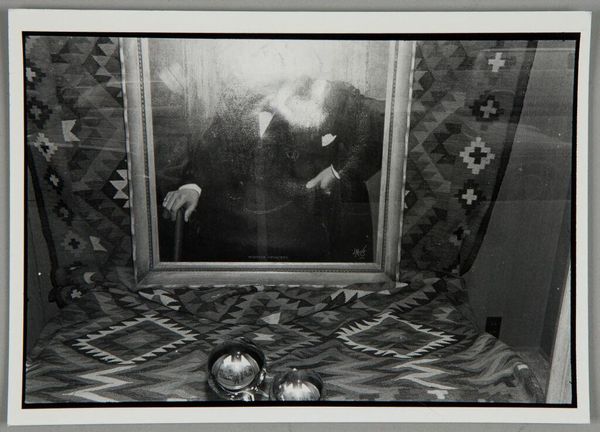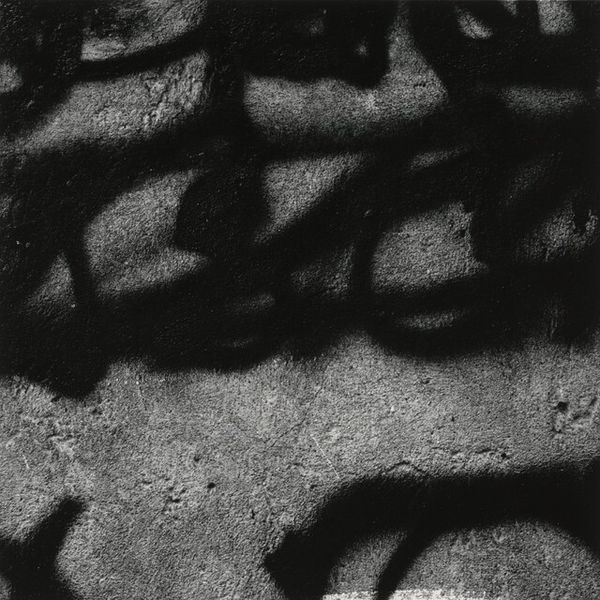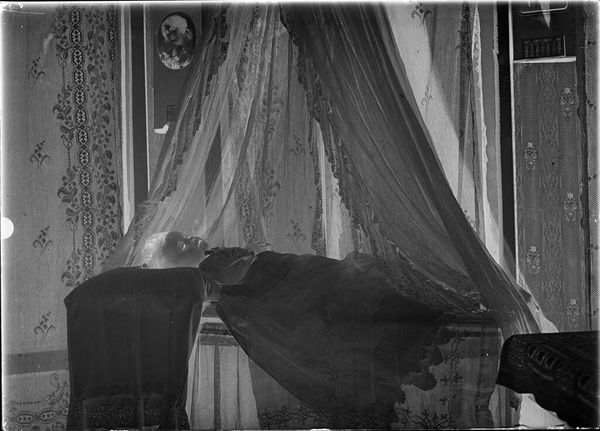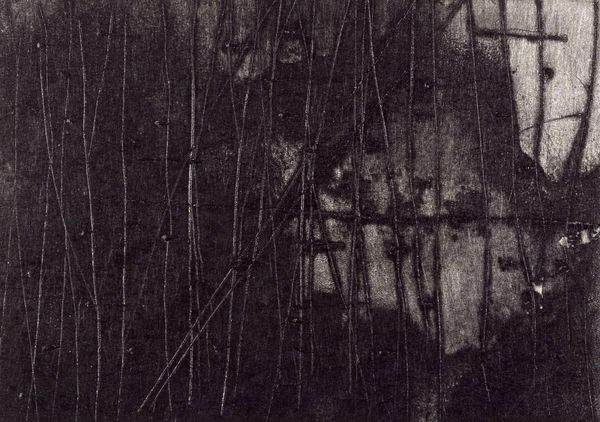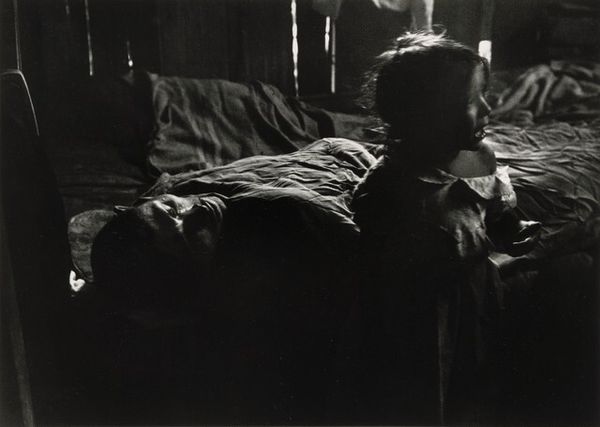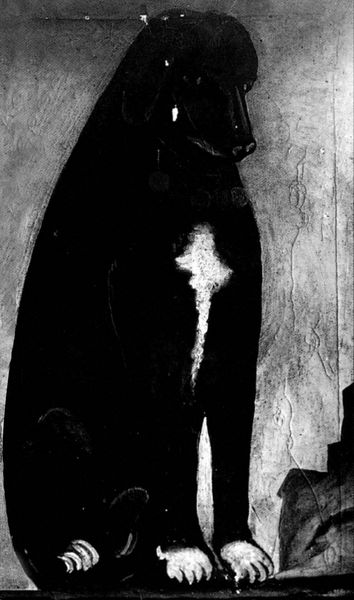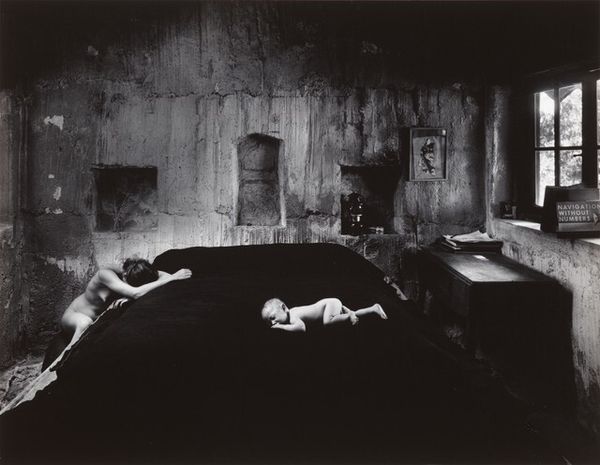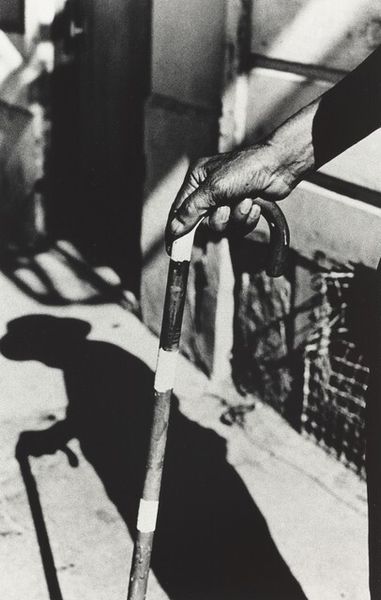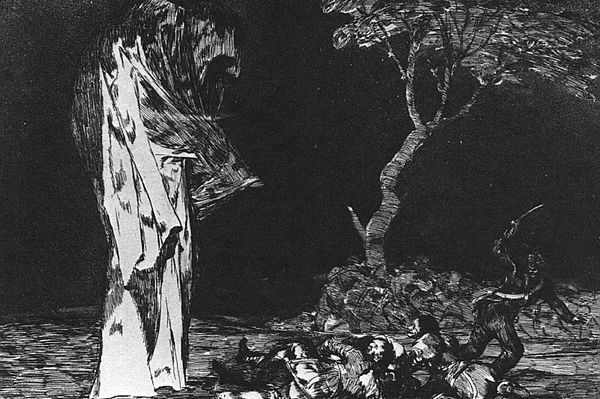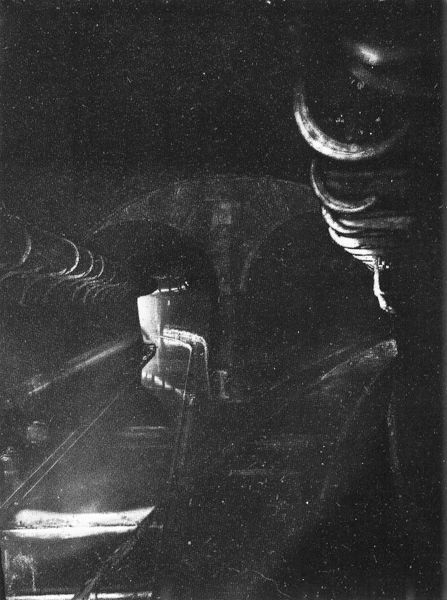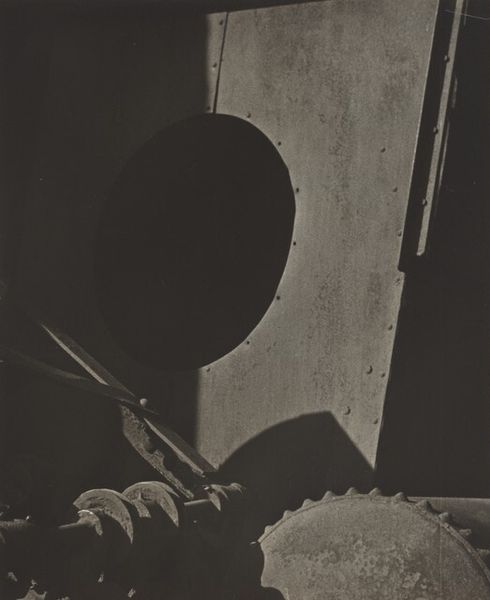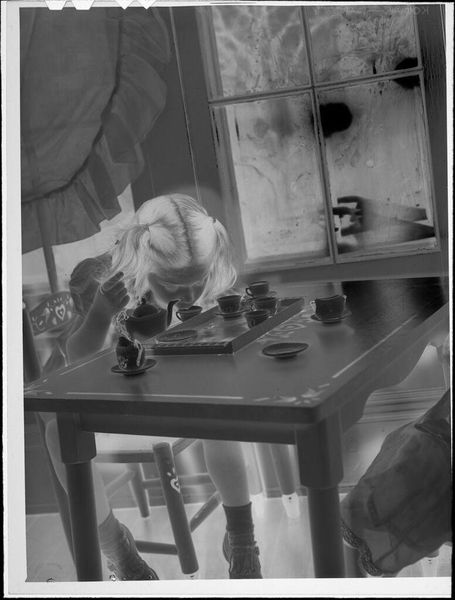
photography, gelatin-silver-print
#
art-deco
#
black and white photography
#
black and white format
#
photography
#
intimism
#
black and white
#
orientalism
#
gelatin-silver-print
#
monochrome photography
Copyright: Brassai,Fair Use
Curator: This gelatin silver print, "An Opium Den, Avenue Bosquet, Paris," by Brassai, transports us to a clandestine corner of 1930s Paris. What strikes you first about it? Editor: Well, aside from the rather blatant and shocking content, I would say its the composition that pulls me in, this striking contrast between the sharp details of the foreground and the ghostly shadow figures looming on the back wall... Curator: Brassai was drawn to the hidden underbelly of Paris—the prostitutes, the gangsters, the addicts. His work reveals an intimate, almost voyeuristic view into these worlds, doesn't it? I get a feeling he romanticized the underground and immortalized those nights in his prints, like postcards from a secret life... Editor: I think romanticization is too mild a word! This photograph doesn't just present a scene, it actively participates in the visual othering and orientalism so common in Western art depicting Opium Dens. The setting is very purposefully exoticized. This contributes to the racist association between drug use and Asian people at the time. Curator: Interesting point. It also feels to me like Brassai wasn't simply documenting, but rather shaping his world. He called himself the "eye of Paris," implying that his subjective gaze formed the narrative. You sense the tension between observation and his personal creative lens. What story does it tell, then, this picture? Editor: Stories have consequences, especially the ones we tell about marginalized groups. This photograph reinforces cultural stigmas, rather than critiquing systems of power and colonial narratives, it feeds right into them. And those sharp, polished implements contrast terribly with the dark backdrop... it brings up the dangerous implications of desire, exploitation, and erasure that lurk in photographs like this. Curator: Indeed, the silver gelatin prints do have that uncanny way of turning everyday realities into timeless visions. But those razor edges and dramatic angles can certainly hide the human dimensions in the tale. Thanks, those are things I’ll need to explore further myself in considering it. Editor: That is the key - exploring it - critically! By recognizing that art isn't made in a vacuum but emerges from very biased power structures, maybe we can start to dismantle some of their impact on the world around us.
Comments
No comments
Be the first to comment and join the conversation on the ultimate creative platform.

